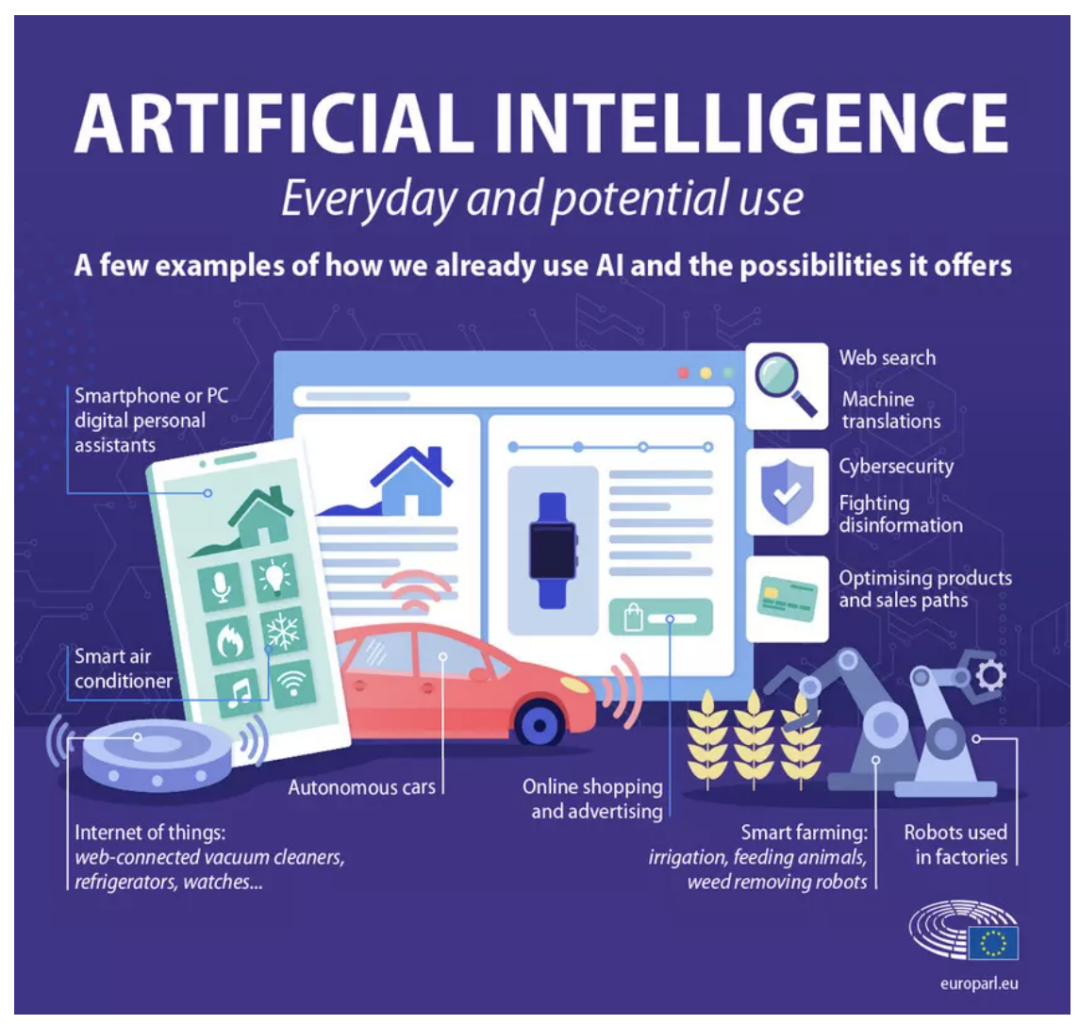
For some time, I’ve been looking for one “source” that curates modern takes on HR Tech, perspectives from the people who build it, and its impact on enterprise — something that’s tailor-made by professionals for decision-makers.
I never found it — so I decided to build it.
Every week, I’ll be sharing fresh insights on tech platforms, design, data, and the future of work — straight to your inbox.
This week, I’m excited to introduce my good friend as our second guest author for Exit Interview, Andrew Cote! Andrew is a veteran of the United States Marine Corps, and I’m very excited and honored he agreed to join us. Enjoy his words of wisdom – and thank you for your service, Andrew. I’ll see you next week!
– Patrick
My Thoughts
My name is Andrew Cote, and I am honored to be this week’s guest author for Exit Interview. My career began in the United States Marine Corps, where I served as a Battalion Staff Officer with 2nd Battalion, 8th Marines stationed in Camp Lejeune, North Carolina. In 2016, I received orders to serve as a Presidential Support Program Platoon Commander in Guard Company, Marine Barracks Washington D.C.
In 2018 I was assigned the billet of Marine Security Force Commander at the White House Communications Agency, a component of the White House Military Office. My team was tasked with providing worldwide physical security for the President, Vice President, and the National Security Council, among other U.S. officials. I also had the unique opportunity to serve two administrations as a Military Social Aide to the 44th and 45th Presidents of the United States.
I’ve since returned to civilian life. Currently, I am the Chief of Staff at BRINC Drones. At BRINC, we harness drone technology to save lives. Our team works hand in hand with our customers to imagine and build American-made drones that protect first responders and people in situations of real-world danger. Needless to say, it’s been an exciting endeavor and I’m grateful for the wildly fast growth we’ve experienced over the past few months. (In fact, we’re looking for new team members in all areas. If you want to save lives with drone technology, apply on our website.)
I’ll admit, when Patrick asked me to be a contributor, I thought it was a little strange for someone with my background to be writing a human resources newsletter. But Patrick’s reasoning, which I now totally agree with, is that good leadership transcends any particular industry. And if you challenge yourself to learn as much as possible, you’ll find important leadership inspiration, solutions, and lessons hidden in unusual places.
So, I encourage you to read on. In addition to the special leadership section later in the newsletter, I’ve written about another one of my favorite topics: artificial intelligence. I hope you enjoy it.
Semper fidelis,
-Andrew
Tech Innovation at Work
The Marine Corps is a major contributor to artificial intelligence research and development. It has helped me save lives overseas and stateside at BRINC. Patrick talks a lot about the use of AI for identifying pain points, synthesizing data, building algorithms, and other types of organizational applications of digital transformation.
But AI doesn’t always have to solve global-scale problems or help protect our country to be useful. Artificial intelligence and machine learning already play a role in civilian life. Take these three examples:
Making sure you brush properly: Brands like Colgate, Philips, and Oral-B have combined dental science with computer science to help us brush better. Smart toothbrushes are equipped with sensors that capture, process, and transmit brushing speed, location, and pressure via Bluetooth. These toothbrushes then transmit the data back to your phone in real time.
Helping you shop online: Every month, 65% of the US population visits Amazon.com. Even if you aren’t part of that statistic, we’ve all shopped on a website that has suggested products to us. “Recommended Products” algorithms are one of the most common examples of artificial intelligence. As you shop, what you click on, how long you view the item, and where you click next are all recorded and processed by algorithms within the website, which returns other items you may be interested in. This recommendation engine is mutually beneficial: retailers sell more items, and customers spend less time hunting for the things they want, resulting in a better experience.
Getting you an Uber: A few years ago, Uber rolled out an AI initiative called One Click Chat. Any time a passenger messaged their Uber driver, their text was first received by Michelangelo, the company’s machine-learning platform. Using millions of anonymized UberChats, Michelangelo was taught to “read” messages, understand intent, and prepare four UberChat options that the driver can send to their rider with a single click. Using a machine learning model reduces risks of distracted driving without damaging the rider’s experience.

The growth of artificial intelligence is not happening in a vacuum. As we continue exploring the capabilities of machine learning, leaders in the US and abroad have begun discussing how artificial intelligence can and should be regulated. In September, the US Department of Commerce established the National Artificial Intelligence Advisory Committee (NAIAC), an organization intended to “advise the President and other federal agencies on a range of issues related to artificial intelligence.” Right now, there are no federal laws governing AI, leaving regulators to interpret current legislation in the technology sphere as a means of preventing common AI-related challenges like discrimination. Around the world, countries and governing entities have already begun drafting and adopting national regulations. As we continue to improve and integrate these technologies into society, I have no doubt we’ll gain insight into how AI impacts us, and what elements of it require federal oversight.
Lessons in Leadership
There’s one rule of any organized group that stands above every other: leadership makes or breaks success. Our current unprecedented workforce exodus is a premiere example. Employees have made it clear that the traditional way of managing workers is no longer enough. If we could change that — if we could make managers better leaders — I think the Great Resignation would end tomorrow.
Here’s the problem: true leadership can’t be taught in a class or seminar. It’s a skill that has to be built on the job and practiced constantly. I had many chances to practice during my time in the Marine Corps, where strength as a leader is everything. Boot camp taught me the basics. However upon becoming a Lieutenant and meeting my platoon of 65 Marines, my first thought was, how am I supposed to lead these people? They came from all walks of life. Some were younger than me, but many were older. We had never met and now I was responsible for their lives.
My first attempt at leadership was very much hands-on. Every Friday, I held a boxing match. Marines were welcome to challenge me in the squared circle. My objective was to level the playing field and bond with them as people, rather than as a ranking officer. I’ll be the first to admit that I was knocked down a few times — and that was the point. Being a good leader wasn’t about proving that I couldn’t be beaten. It was about proving that I could take defeat with humility.
Humility is one of the most important traits in leaders — and not just because no one likes an arrogant boss. Psychologists and researchers like Emotional Intelligence expert Harvey Deutschendorf have spent years studying how the characteristics of management affect employees and their work. Among the most highly sought-after traits, including optimism, active listening, and visionary, sits humility. In an article for Fast Company, Deutschendorf explains that humble leaders view themselves more as coaches or mentors than managers. With that mindset, they are far more likely to encourage personal growth, foster collaboration, demonstrate integrity, and treat their teams with respect. In addition to higher employee morale, humble CEOs have been associated with higher firm performance.
This isn’t to say that just being humble made me the perfect leader. Like everyone else, I made my fair share of mistakes. But there was one day in the United States Marine Corps that proved to me I was doing something right, and I remember it quite fondly. As an officer, I ate last at every meal. I remember one dinner in particular where the dishes were completely emptied by the time everyone in the platoon had served themselves. I went to my tent to get some rations from my backpack for dinner instead. Before I could sit down to eat, though, a Marine came to the flap of the tent to hand me a full tray. Each member of the platoon had offered up a spoonful of their own food to make sure I had a real dinner.
The way I see it, great leadership makes people better — the leader and those being led. If you lead with that in mind, with the goal of bettering yourself and those on your team, you’ll have a full tray in no time.
Before we get to some fun statistics, I want to take a quick moment to thank you all for reading, and I highly recommend subscribing to Exit Interview, if you aren’t already, to take advantage of Patrick’s usual weekly insights!
All About Data
I’m excited to see what the future of AI has in store for us, so I wanted to share some insight into what the state of AI looks like now, and where we predict it will be very soon:
- 37% of organizations currently use some form of artificial intelligence (Gartner)
- In the past four years, the percentage of enterprises and organizations adopting AI has increased by 270% (Gartner)
- The top five applications of artificial intelligence are, in descending order, E-Commerce, Navigation, Robotics, Human Resources, and Healthcare (simplilearn)
- The global AI software market is expected to continue a growth rate of 54% year-over-year (Statista)
- By 2025, the global AI market is expected to generate $118 billion in revenue. (Tractica)
95% of customer interactions are expected to be powered before the end of the decade (Servion Global Solutions)
If you would like to hear more from me or explore the work we’re doing at BRINC, feel free to visit our website or connect with me on LinkedIn.
Click here to subscribe to Exit Interview, a weekly email about tech platforms, design, data, and the future of work — straight to your inbox

